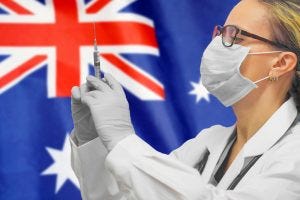
The site in Melbourne will be the first cell-based manufacturing facility in the southern hemisphere to produce flu vaccines, along with Seqirus’ adjuvant MF59 and Australian antivenoms.
Seqirus has been making seasonal flu jabs since 2015 after parent company CSL Limited acquired Novartis’ global influenza vaccine business. The firm has increasingly moved away from egg-based vaccine production towards cell-based manufacturing and has scaled up its capacity to meet demand.
The latest investment announced this week is a plan to spend AU$800 million ($584 million) in a new facility in Melbourne, Australia replacing an older facility nearby.

Image: iStock/Igor Vershinsky
According to the firm, the site – once operational in mid-2026 – will be the only cell-based influenza vaccine manufacturing facility in the southern hemisphere, supplying both Australia and international markets with seasonal and pandemic flu jabs.
“The facility will be an important addition to our global influenza manufacturing supply chain, incorporating the technology platform used in our Holly Springs, North Carolina facility,” said CEO Paul Perreault.
The Holly Springs facility was subject to a $140 million expansion in 2018 to meet future demand for Seqirus’ cell-based quadrivalent influenza vaccine.
Cell-based vaccine production
While egg-based vaccines have been proven to be safe and effective, cell-based production can be faster, more efficient and help ensure manufacturers meet global demand for vaccines. Seqirus described its manufacturing process:
Once the World Health Organization (WHO) makes a strain recommendation and sends samples to manufacturers, Seqirus evaluates viruses and develops a “seed” for manufacturing. Small batches of cell-culture are then prepared and multiplied and when sufficient numbers of cells are available, they are transferred to bioreactors where they are inoculated with one of the selected flu strains.
After that, the virus is isolated, purified and inactivated and the target proteins are collected from the inactivated virus and turned into monovalent bulk antigens, which are then blended to create a quadrivalent (four strain) vaccine.
The new facility will also produce Seqirus’ MF59 adjuvant – used to improve immune response and to reduce the amount of antigen needed for each vaccine – and antivenom for Australian snakes, spiders and marine creatures, along with the world’s only human vaccine for Q-Fever.
About the Author
You May Also Like

schedl_b_and_w.jpg?width=100&auto=webp&quality=80&disable=upscale)
schedl_b_and_w.jpg?width=400&auto=webp&quality=80&disable=upscale)



